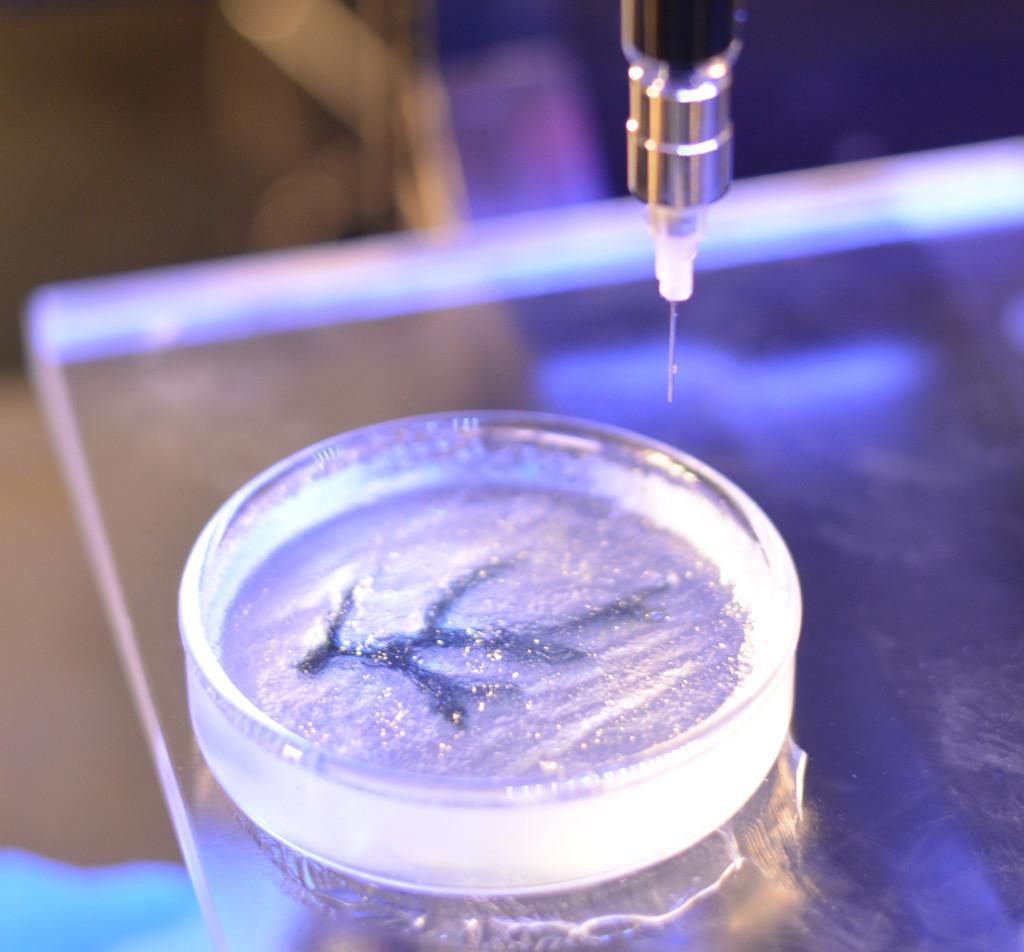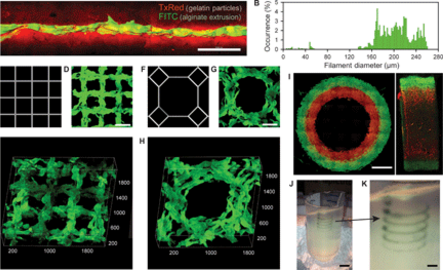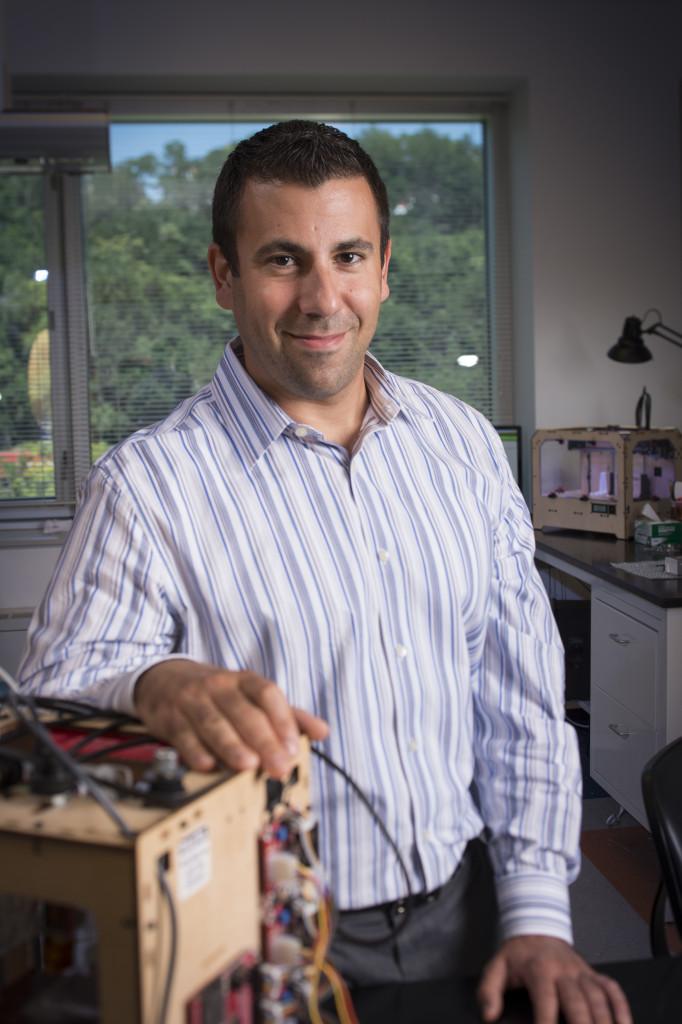 It’s easy to see why 3D printing is so often equated with magic. Who would have ever dreamed we could set up a fairly simple machine, give it some instructions, and watch it fabricate items from the smallest to largest–right in our own homes? That’s enough to blow any time traveler’s mind, but when you look at the progress being made with bioprinting, it’s apparent that we’ve finally entered that future of technology and progress that has been predicted for decades.
It’s easy to see why 3D printing is so often equated with magic. Who would have ever dreamed we could set up a fairly simple machine, give it some instructions, and watch it fabricate items from the smallest to largest–right in our own homes? That’s enough to blow any time traveler’s mind, but when you look at the progress being made with bioprinting, it’s apparent that we’ve finally entered that future of technology and progress that has been predicted for decades.
Scientists today would most certainly make it clear that bioprinting is not a result of magic, but that of many hours logged in the lab as they work to make it viable in the future for use in the areas of pharmaceuticals and organ transplants. Before concepts can come to fruition, however, the tools must be in place.
At the Carnegie Mellon University College of Engineering, research in soft material bioprinting may eventually mean that waiting lists for transplants can one day be eliminated, as procedures like repairing the heart may soon become much easier.
Their first concern though was creating the optimum 3D printer for the fabrication of soft materials and tissue. Because the normal 3D printer is used to create models that are generally hard and durable, the research team had to come up with a machine that could make pliable materials. While traditional 3D printing hardware may not work for the type of bioprinting these researchers want to do, all the same benefits that come with 3D printing technology are what propels these researchers to their ultimate goal, with the use of open-source technology and great affordability.
Adam Feinberg and his team in the Regenerative Biomaterials and Therapeutics Group have just released their research in a paper, ‘Three-dimensional printing of complex biological structures by freeform reversible embedding of suspended hydrogels,’ authored by Thomas J. Hinton, Quentin Jallerat, Rachelle N. Palchesko, Joon Hyung Park, Martin S. Grodzicki, Hao-Jan Shue, Mohamed H. Ramadan, Andrew R. Hudson, and also Adam W. Feinberg.
Just published in Science Advances, the researchers outline how they are able to 3D print ‘soft protein and polysaccharide hydrogels’ with a new process they have abbreviated to call FRESH, which stands for freeform reversible embedding of suspended hydrogels.
“Traditional 3D printers print hard materials, and we’re really trying to move that into a whole new range of soft materials that will eventually allow us to print living things,” says Adam Feinberg, associate professor of Materials Science and Engineering and Biomedical Engineering at Carnegie Mellon University.
One gel is printed inside of another, which acts as a support and allows for stable printing of layers. The soft materials are 3D printed in a gentle support bath which is heated at the end and allows for removal of the pliant model without damaging or killing it.
“The support bath is composed of gelatin micro-particles that act like a Bingham plastic during the print process, behaving as a rigid body at low shear stresses but flowing as a viscous fluid at higher shear stresses,” state the researchers. “This means that, as a needle-like nozzle moves through the bath, there is little mechanical resistance, yet the hydrogel being extruded out of the nozzle and deposited within the bath is held in place. Thus, soft materials that would collapse if printed in air are easily maintained in the intended 3D geometry.”
The team has gotten to this point through hacking and building their own 3D printer. While technology for this type of work would generally cost close to $100K, it is the use of open-source software and hardware, resourcefulness, and numerous different innovative approaches that allowed them to make their own machine for exponentially less.
“FRESH is built on open-source hardware and software and the gelatin slurry is low cost and readily processed using consumer blenders,” state the researchers. “To emphasize the accessibility of the technology, we implemented FRESH on a $400 3D printer (Printrbot Jr, movie S10) and the STL file to 3D print the custom syringe-based extruder can be downloaded…”
“It should be acknowledged that the direct bioprinting of functional tissues and organs requires further research and development to become fully realized, and a number of companies and academic laboratories are actively working toward this goal.”
 The researchers see the low cost of their technique, combined with the 3D printing of hydrogels, as one that could transform and significantly expand bioprinting and breakthroughs in a variety of sectors–especially in pharmaceuticals and regenerative therapy.
The researchers see the low cost of their technique, combined with the 3D printing of hydrogels, as one that could transform and significantly expand bioprinting and breakthroughs in a variety of sectors–especially in pharmaceuticals and regenerative therapy.
“We’ve been able to take MRI images of coronary arteries and 3-D images of embryonic hearts and 3D bioprint them with unprecedented resolution and quality out of very soft materials like collagens, alginates and fibrins,” said Feinberg.
Their next step as they evolve in this process, is to integrate actual cells from the heart into their 3D printed tissue. This will work in the future as a foundation or scaffold for building actual muscle. We’ll continue to follow this team as they work together in making staggering developments via research, open source software and hardware and 3D printing. Let’s hear your thoughts on the implications of printing such tissue. Discuss in the 3D Printed Soft Tissue forum thread on 3DPB.com.
Subscribe to Our Email Newsletter
Stay up-to-date on all the latest news from the 3D printing industry and receive information and offers from third party vendors.
Print Services
Upload your 3D Models and get them printed quickly and efficiently.
You May Also Like
3D Printing News Briefs, June 11, 2025: Sustainability, Automotive Tooling, & More
We’re starting with sustainability news in today’s 3D Printing News Briefs, as EOS has strengthened its commitment on climate responsibility, and Zestep is making 3D printing filament out of eyewear...
3D Printing 50 Polymer Stand-In Parts for Tokamaks at the PPPL & Elytt Energy
Of all the world’s things, a tokamak is one of the hardest, most complex, expensive and exacting ones to make. These fusion energy devices make plasma, and use magnets to...
3D Printing News Briefs, May 17, 2025: Color-Changing Materials, Humanoid Robot, & More
We’re covering research innovations in today’s 3D Printing News Briefs! First, Penn Engineering developed 3D printed materials that change color under stress, and UC Berkeley researchers created an open source,...
Firehawk Aerospace Partners with JuggerBot 3D, Gets $1.25M from AFWERX for 3D Printed Propellants
Texas-based Firehawk Aerospace, an advanced energetic materials firm that works with aerospace and defense applications, announced a strategic partnership with JuggerBot 3D, an Ohio-based large-format 3D printer manufacturer. Together, the...



































